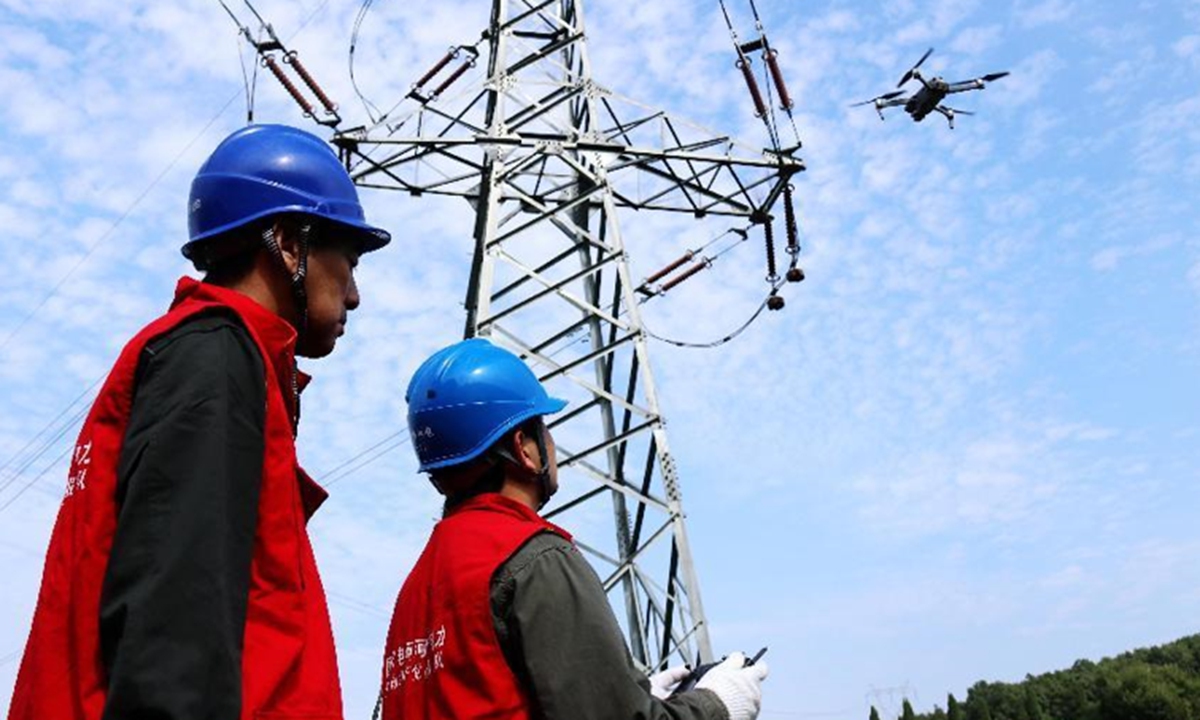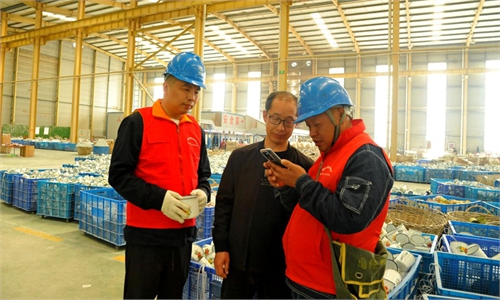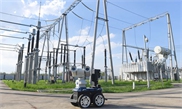State Grid Nanyang company in C.China's Henan innovates with drones for power supply inspection

Photo: Courtesy of State Grid Neixiang Power Supply Company in Nanyang
In a recent breakthrough in power grid inspection, State Grid Neixiang Power Supply Company in Nanyang, Central China's Henan Province, has embraced the use of unmanned aerial vehicle (UAV) technology for a comprehensive and efficient monitoring of transmission lines and their surrounding environments.
This innovative approach ensures the safe and stable operation of the power grid, thereby providing robust support for local economic development and rural revitalization.
Drone inspections, utilizing visible light and infrared thermal imaging equipment, have emerged as a new technology that offers several advantages.
These include speed, efficiency, geographic independence, superior inspection quality, and enhanced safety. According to data, drone inspections have identified 78.5 percent of previously undetectable defects at or above the tower bottle mouth, significantly improving both the efficiency and quality of equipment inspections. This has not only reduced the labor intensity but also elevated the level of intelligent development in line inspections.
In contrast to traditional manual inspections, UAV inspections by the State Grid Neixiang Power Supply Company boast several benefits. They do not require favorable weather conditions, offer high system integration, provide high-resolution images, and facilitate quick and efficient task execution.
"The key advantage of UAV inspections," explained a company executive, "is their ability to ensure efficient data acquisition and reduce environmental impacts on information gathering and surveying during the planning of transmission line corridors and substation sites." The processed data from UAV systems can supply accurate and comprehensive environmental data, crucial for power grid planning and design.
As drone technology continues to advance at an intelligent and rapid pace, State Grid Neixiang Power Supply Company have increasingly incorporated drones into various aspects of power grid construction, emergency response, and planning and design supervision.
This integration has effectively reduced the cost budget for power enterprises, enhanced work efficiency, and notably decreased the failure rate. Statistics reveal that through the application of drone inspections, the company can save approximately 653,000 yuan ($92,000) annually in power grid planning and construction costs.
This innovative approach not only streamlines the inspection process but also underscores the potential of UAV technology in transforming the power grid industry, contributing to a more sustainable and efficient future.



